I have made dozens of trips to China, starting in 1979 with the first group of foreign tourists onboard the Marco Polo. Back then there were no accommodations for westerners. We even had to haul over our own buses from the boat from Japan to Shanghai. But today I see the most scenic freeways with magnificent landscaping on the islands of the roadways. I see five-star accommodations with detailed amenities. There are a plethora of construction cranes building immense condo and apartment complexes with contemporary architecture.
You can’t travel to China without getting caught up in the history of the country. An ancient civilization, important historical sites and relics are everywhere. During this particular trip we visited several important historic and cultural sites such as the Shaolin Temple of Kung Fu, two ancient capitals of China (Chang’An and Luo’yang), Lijiang, Zhongdian, the Hanging Monastery, and much more.
We flew in China from Minsk via Dubai, to Zhengzhou on Etihad Airways. Upon arriving in Zhengzhou we stayed in the modern and luxurious Crown Plaza Zhengzhou. Zhengzhou is a prefecture level city on the Yellow River where neolithic settlements from the early Shang Dynasty been found. The city has been classified as one of the “Eight Great Ancient Capitals of China.” Since 1949 Zhengzhou has been a major industrial and trade center, and today the city serves as the main transportation hub for central China. A rapidly growing city, it is believed that by 2025 China will have TEN New York sized cities, of which Zhengzhou will be among them.
Shaolin Temple
First we visit Dengfeng, home to the famous Shaolin Temple of Kung Fu. Founded in the 5th century, the temple was constructed in the shadow of Mount Song, one of China’s sacred mountains. The Shaolin Temple has a long history as a sanctuary for practitioners of Mahayana Buddhism.
- Shaolin Temple near Dangfeng.
- Shaolin Temple near Dangfeng.
- Shaolin Temple near Dangfeng.
- Outside the Shaolin Temple.
- Outside the Shaolin Temple near Dangfeng.
- Outside of the Shaolin Temple near Dangfeng.
- Sacred rock outside the Shaolin Temple.
- Shaolin Temple near Dangfeng.
- Kung Fu statue at the Shaolin Temple.
- The Shaolin Temple of Kung Fu.
- Front of the Shaolin Temple.
- Statues at The Shaolin Temple of Kung Fu.
- Front of the Shaolin Temple.
- Shaolin Temple near Dangfeng.
- Statues at The Shaolin Temple of Kung Fu.
- Inside the Shaolin Temple.
- Kung Fu performance at the Shaolin Temple.
The Shaolin monks practice a form of martial arts and Buddhist philosophy with tremendous intensity. The origin of this sacred art comes from India. In ancient times, monks were not allowed to defend themselves against bandits using weapons and so the use of Kung Fu hand-to-hand fighting evolved. Today traveling shows of Kung Fu have tarnished the monks’ image throughout the world. Monks were not allowed to defend them selves from robbers with weapons, so open handed fighting evolved. Regardless, this is still the spot where the mystical art began. Today, there are over 100 schools and the biggest has over 30,000 students.
- Kung Fu performance at the Shaolin Temple.
- Kung Fu performance at the Shaolin Temple.
- Kung Fu performance at the Shaolin Temple.
- Weapons and arms shop at the Shaolin Temple.
- Weapons and arms shop at the Shaolin Temple.
From what I could tell, we were among the few foreigners in the interior of China. If you have not been to China in the last few years, it has changed. More modern and clean attractions are everywhere. Resort hotels are everywhere and there are many top restaurants.
We continued on to Luoyang which was one of the most important ancient capitals of China, throughout 13 different dynasties, dating from the 11th century B.C.
Longmen Grottoes
The nearby UNESCO-listed Longmen Grottoes is a cave complex decorated with over 100,000 images of Buddha; the Luoyang Ancient Tombs Museum, the only tombs museum in China. The city’s flower is the peony. The Longyong Museum celebrates the history of the original capital of China. It’s is a very large and modern facility and I saw many school children on field trips. I was surprised to see how intrigued the students seemed at seeing foreigners. Among the many pieces on display there are many colored pottery pieces from the Tang Dynasty.
- Longmen Grottoes near Luoyang.
- The Longmen Grottoes near Luoyang.
- Longmen Grottoes near Luoyang.
- The Longmen Grottoes near Luoyang.
- Longmen Grottoes near Luoyang.
- The Longmen Grottoes near Luoyang.
- Longmen Grottoes near Luoyang.
- Longmen Grottoes near Luoyang.
- The Longmen Grottoes near Luoyang.
- The Longmen Grottoes near Luoyang.
- Longmen Grottoes near Luoyang.
- The Longmen Grottoes near Luoyang.
Next we visited the White Horse Temple and monastery. So named in honor of the horse that carried the first Buddhist manuscripts into China from India.
In the late afternoon we boarded a high speed train to Xi’an. Xi’an lies in the provincial capital of Shaanxi and marks the beginning of the ancient Silk Road. Under the ancient name Chang’an, Xi’an was the home to 11 Chinese dynasties and is one of China’s oldest and most historically important cities. At the peak of the 8th century, over a million people lived in Xi’an.
Mount Huashan
Next we took a two hour drive to Mt. Huashan, one of the five sacred Taoist mountains. It’s name means “Flower Mountain” because it resembles a flower from afar. Narrow stone stairs, some with dizzying vistas, lead up the steep crags. Small temples, statues, and pavilions lie tucked in amongst the rock outcroppings.
- Stairs of Mt Huashan.
- Top of Mt Huashan.
- Mt Huashan, the “Flower Mountain” of China.
- Mt Huashan, the “Flower Mountain” of China.
- Illustration of Mt Huashan.
- Mt Huashan, the “Flower Mountain” of China.
- Top of Mt Huashan, China.
- Mt Huashan, the “Flower Mountain” of China.
- Walking up Mt Huashan.
- Mt Huashan, the “Flower Mountain” of China.
- Mt Huashan, the “Flower Mountain” of China.
- Base of Mt Huashan
- Near Mt Huashan, the “Flower Mountain”
- Mt Huashan, the “Flower Mountain”
Terracotta Army of Qin Shi Huang
The city’s most important historical site is the tomb of China’s first emperor Qin Shi Huang. Guarding the tomb is the magnificent Terra Cotta army of 7000 life-size figures. The famous Terracotta Army was built by the first emperor of China, Qin Shi Huang, and was discovered by peasants digging a well in 1974. An incredibly well-preserved and important cultural and historical site of China, the Chinese and regional governments have improved the display over the years. Today the tomb complex has many buildings housing artifacts. There we inspected the original crafted warriors, horses and chariots.
- Terracotta Army of Qin Shi Huang, first emperor of China.
- Terracotta Army of Qin Shi Huang, first emperor of China.
- Terracotta Army of Qin Shi Huang, first emperor of China.
- Terracotta Army of Qin Shi Huang, first emperor of China.
- Terracotta Army of Qin Shi Huang, first emperor of China.
- Terracotta Army of Qin Shi Huang, first emperor of China.
- Terracotta Army of Qin Shi Huang, first emperor of China.
Lijiang
At Xi’ans modern new airport we take a two hour flight south to Lijiang, in China’s southwestern province of Yunnan.
The entire city of Lijiang is a UNESCO World Heritage Site. The temperature becomes cool in the mountain environment. The town is very alive with shops and restaurants. Cobbled stone streets, most of them walk streets curve around a network of canals and gardens where people live and work.
- Streets of Lijiang, China.
- Streets of Lijiang, China.
- Food stall in Lijiang, China.
- Food stall in Lijiang, China.
- Streets of Lijiang, China.
- Stall in Lijiang.
Lijiang is a charming hamlet located near the northern tip of the Himalayas. This is where we meet the Naxi people, a matriarchal culture related to the Tibetans. Their early hieroglyphic written language is the only one of its kind still in use. Our five star hotel, the Crowne Plaza Lijiang, is true work of art and is considered in the top ten best hotels in China.
- The exquisite hotel Crowne Plaza Lijiang.
- The exquisite hotel Crowne Plaza Lijiang.
- The exquisite hotel Crowne Plaza Lijiang.
- The exquisite hotel Crowne Plaza Lijiang.
- The exquisite hotel Crowne Plaza Lijiang.
- The exquisite hotel Crowne Plaza Lijiang.
- The exquisite hotel Crowne Plaza Lijiang.
- The exquisite hotel Crowne Plaza Lijiang.
- The exquisite hotel Crowne Plaza Lijiang.
- The exquisite hotel Crowne Plaza Lijiang.
- The exquisite hotel Crowne Plaza Lijiang.
- The exquisite hotel Crowne Plaza Lijiang.
- The exquisite hotel Crowne Plaza Lijiang.
- The exquisite hotel Crowne Plaza Lijiang.
Black Dragon Pool Park
That day we visited the Black Dragon Pool Park, featuring 500 varieties of flowers set against the majestic backdrop of the Hilalayas. The Dongba Museum displays scrolls and artifacts. We visited a school for embroidery where students are trained free of charge to keep this art alive. The pieces many of us bought were of the highest quality. The Five Phoenix Temple dates from the Ming Dynasty which was a short stroll.
- Naxi people in Lijiang.
- Five Phoenix Temple in Lijiang.
- Five Phoenix Temple in Lijiang.
- Five Phoenix Temple in Lijiang.
- Five Phoenix Temple in Lijiang.
- Art and embroidery at the Dongba Museum.
- Arts and crafts at the Dongba museum.
- Art and embroidery at the Dongba Museum.
- Artisans at the Dongba Museum.
- Artisans at the Dongba Museum.
- Artisan at the Dongba Museum.
Next we took a cable car to the meadows of Yunshanping, on the outskirts of Lijiang, where yaks graze. This is also home to the highest golf course in Asia (highest-elevated – not high in the sense that everyone’s smoking the ganja).
In the Naxi Village of Baisha we were privileged to have dinner in a private farmhouse village. The Naxi taught us about their culture and cuisine. Then as the sun fell we attended a performance of Classical Chinese music performed by the Naxi Folk Music Orchestra. It was interesting to note that this village area was a stopping point during Mao’s Long March of 1930-1935.
- Having dinner in a private home of Naxi people in Baisha.
- Having dinner in a private home of Naxi people in Baisha.
- Naxi people in Baisha.
- Naxi people in Baisha.
- Naxi boy in Baisha.
- Naxi girl in Baisha.
- Baisha, a Naxi town in Yunnan.
- Baisha, a Naxi town in Yunnan.
- Baisha, a Naxi town in Yunnan.
- Near Baisha, in Yunnan.
- Near Baisha, in Yunnan.
- Naxi people in Baisha.
Tiger Leaping Gorge
Driving to Zhongdian we wind above the turbulent Yangtze River surrounded by numerous 10,000-foot karst limestone peaks. We climb down the Tiger Leaping Gorge to see the rapids up close. The gorge is part of the UNESCO-listed Three Parallel Rivers of Yunnan protected area, an area of great biodiversity due to its location in a climate convergence zone – the temperature zone meets the tropical zone here, and wildly diverse flora and fauna have arisen as a result.
- Tiger Leaping Gorge of China.
- Tiger Leaping Gorge of China.
- Tiger Leaping Gorge of China.
- Tiger Leaping Gorge of China.
- Tiger Leaping Gorge of China.
- Tiger Leaping Gorge of China.
- Tiger Leaping Gorge of China.
- Tiger Leaping Gorge of China.
- Tiger Leaping Gorge of China.
I noticed on this trip throughout China a broad program of reforestation whereever I went. Zhongdian is a part of Shangri-La County, which was recently renamed as a nod to James Hilton’s fabled eastern land in an effort to promote tourism. The entire province of Yunnan is home to almost half of China’s ethnic groups, and Shangri-La county has strong Tibetan influences.
Here we visited the Songzanlin Monastery dating from the year 1679. Built in the traditional Tibetan Style of Lhasa’s Potala Palace, the monastery straddles the top of a hill at almost 11,000 feet. The Tibetan Buddhist monastery complex includes two lamaseries and many living spaces for the monks. The main prayer hall holds 1,600 people, and is beautifully decorated with frescos and sculptures. We again partake in the local hospitality and share a meal in a local farm house. Interesting to note that here in Shangri-La is the world’s largest prayer wheel, which takes over a dozen people to turn.
- Interior decor at Songzanlin Monastery.
- Locals near Songzanlin Monastery.
- Songzanlin Monastery of Yunnan, China.
- Monk near Songzanlin Monastery.
- Locals near Songzanlin Monastery.
- Artwork at Songzanlin Monastery.
- Locals near Songzanlin Monastery.
- Songzanlin Monastery of Yunnan, China.
- Songzanlin Monastery of Yunnan, China.
- Artwork at Songzanlin Monastery.
- Locals near Songzanlin Monastery.
- Local near Songzanlin Monastery.
- Songzanlin Monastery of Yunnan, China.
- Monk near Songzanlin Monastery.
- Songzanlin Monastery of Yunnan, China.
Many communities in China had hoped to brand themselves using the classic name for the benefits of tourism, though I think the final choice was a good one. All the buildings and especially the airport have kept with the Tibetan tradition of color and style.
The next day we visit Pudacuo National Park, featuring a serene and peaceful lake surrounded by groves of alpine trees. The area was established as a national park in 2007 with the help of the Nature Conservancy. The wetlands surrounding its two lakes are a favorite habitat of migratory birds, particularly the rare Black-necked Crane. Over a hundred endangered species are found here, as well a twenty percent of the country’s plant species. This is China’s first national park and it is exceptional.
Pingyao
Next we went to Kunming and took a four-hour flight to the ancient city of Pingyao, in the northern Shanxi region. Pingyao is one of the best-preserved ancient cities in the world, an outstanding example of Han nationality during the Ming and Qing Dynasties. It is called “the first city in North China”. It’s a very photogenic place with a spectacular outer city wall. Pingyao city wall was first built in 827 BC. It covers a length of 6.4 km and stands 30 feet high with 72 ornate towers. Bronze statues dot the outer wall every few hundred yards. Climbing one of the ornate wall towers you get a spectacular view of the narrow streets and roof tops. Shops are everywhere with unique quality items. The first bank in China is located here, and it was the first museum we visited. No vehicles are allowed inside the city. You know you are at some place special when even the guides are taking pictures.
- Walls of Pingyao, China.
- Wares in Pingyao.
- Pingyao, an ancient city of China.
- Pingyao, an ancient city of China.
- Pingyao, an ancient city of China.
- Pingyao, an ancient city of China.
- Banker at China’s first bank, Pingyao.
- Pingyao, an ancient city of China.
- Pingyao, an ancient city of China.
- Streets of Pingyao, an ancient city of China.
- Streets of Pingyao, an ancient city of China.
- Streets of Pingyao, an ancient city of China.
- Streets of Pingyao, an ancient city of China.
- Streets of Pingyao, an ancient city of China.
A long drive to the north west found us in a much cooler mountainous region. We explored from top to bottom Mt Wutai, or the “Five Plateau Mountain.” Mt. Wutai Shan is one of China’s Five Sacred Mountains and was declared a UNESCO site in 2009. An important site for Buddhism, the mountain is dotted with 53 monasteries. We saw a beautifully-preserved timber building from the Tang Dynasty. The five flat peaks of Wutai Shan have been tended to and beautified for 2,000 years. Nine different emperors have made pilgrimages to Mt Wutai to honor the bodhisattva of wisdom, Manjusri, believed to live here. We witnessed dramatic views while visiting the Tibetan Yellow Hat sect Pushading Temple, reminiscent of the Potala Palace in Lhasa.
Next, we took a long drive to Datong and climbed to the Hanging Monastery, built 1400 years ago with precipitous cliffs and old pines. Some in our group felt that this was the most impressive place we saw on the trip.
- Hanging Monastery near Datong.
- Hanging Monastery near Datong.
- Hanging Monastery near Datong.
- Hanging Monastery near Datong.
- Hanging Monastery near Datong.
- Hanging Monastery near Datong.
- Hanging Monastery near Datong.
- Hanging Monastery near Datong.
- Hanging Monastery near Datong.
- Hanging Monastery near Datong.
The following day we tour the coal mining capital of Datong. It was founded in 200 B.C. near the Great Wall and Inner Mongolia. This area is home to the Yungang Grottoes, featuring rock-cut Buddhist architecture. The fifth-century caves have over 50,000 carvings and statues. From an area of bluff you can see the Indian Buddhist art as it evolves to a Chinese style. A new ultra modern museum presents the finer-preserved pieces from the ancient caves.
- Yungang Grottoes of China.
- Yungang Grottoes of China.
- Yungang Grottoes of China.
- Yungang Grottoes of China.
- Yungang Grottoes of China.
- Yungang Grottoes of China.
- Yungang Grottoes of China.
- Yungang Grottoes of China.
- Yungang Grottoes of China.
- Yungang Grottoes of China.
- Yungang Grottoes of China.
- Yungang Grottoes of China.
- Yungang Grottoes of China.
- Yungang Grottoes of China.
As the last chapter of our sojourn into the interior regions of China came to a close another chapter was beginning. We flew onward to Beijing as we prepared for the final leg of our trip: the Hermit Kingdom of North Korea.


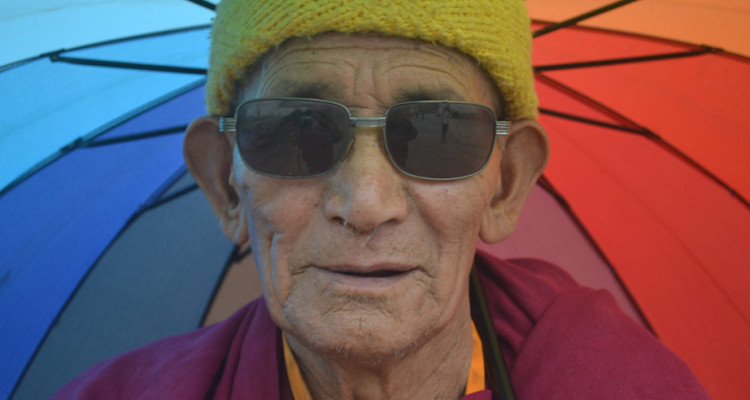
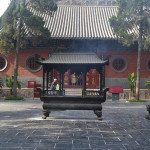
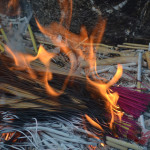
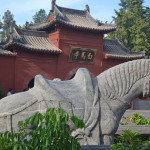
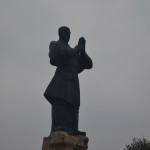
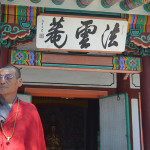
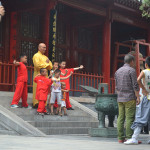
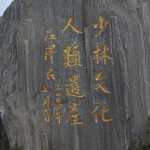
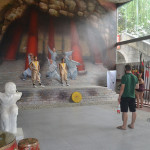
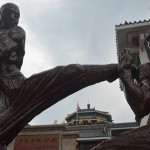
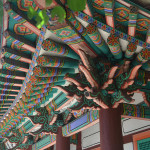
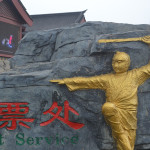
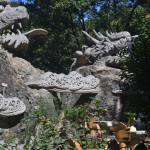
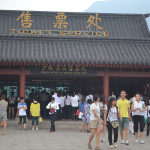
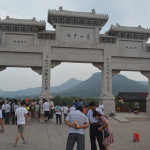
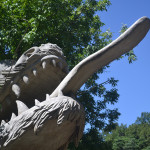
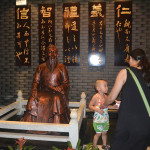
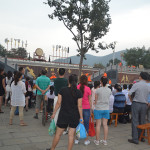
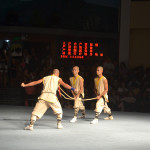
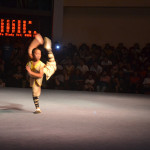
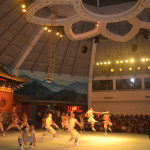
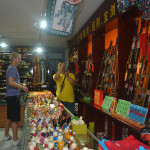
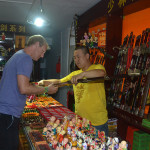
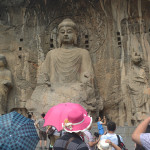
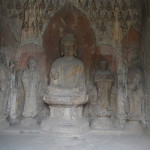
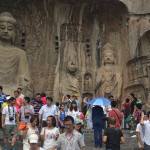
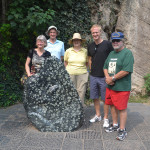
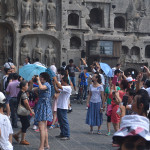
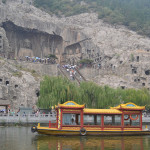
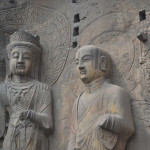
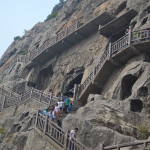
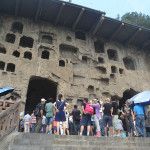
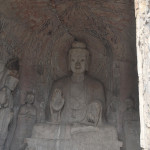
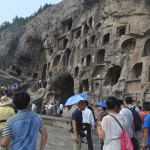
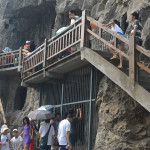
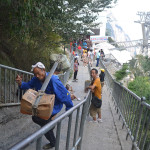
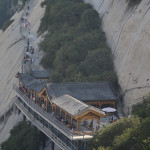
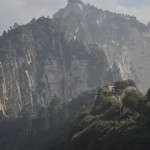
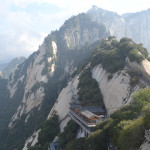
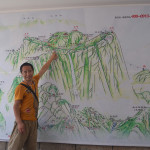
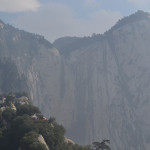
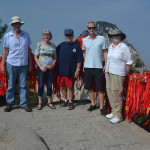
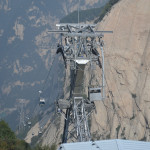
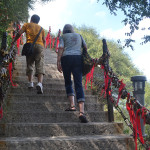
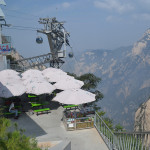
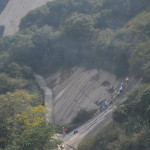
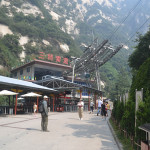
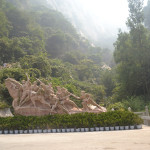
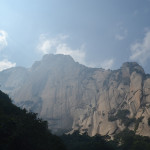
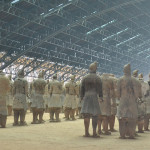
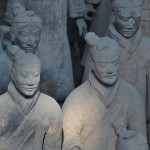
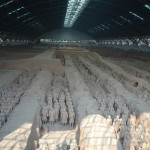
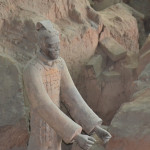
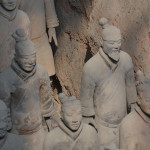
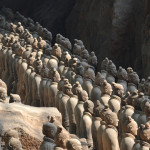
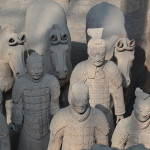
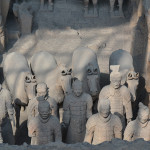
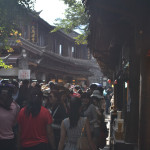
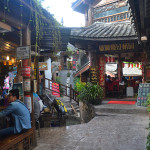
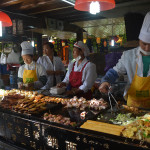
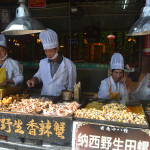
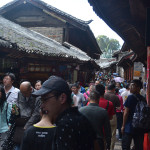
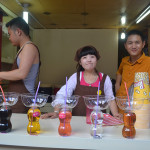
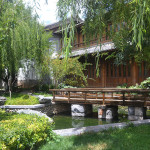
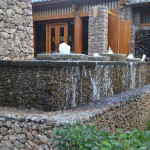
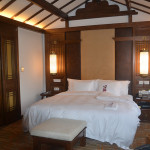
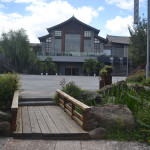
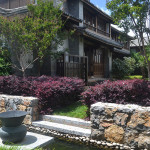
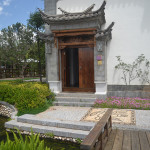
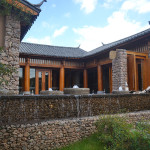
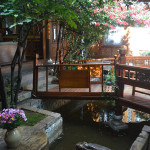
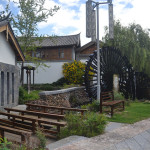
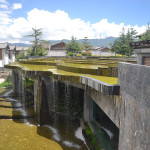
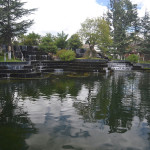
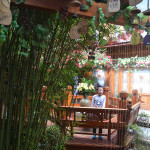
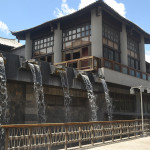
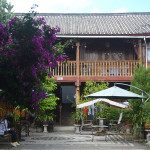
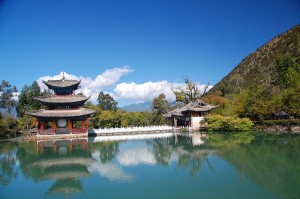
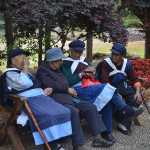
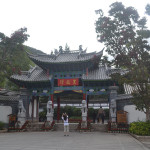
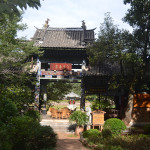
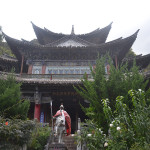
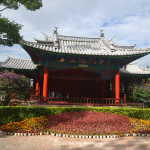
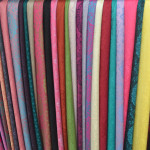
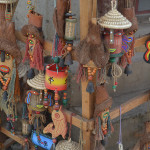
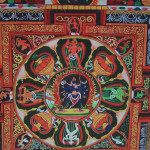
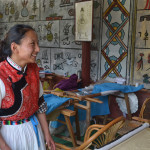
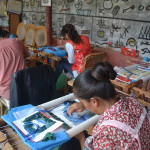
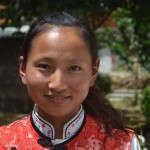
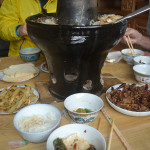
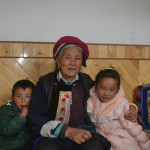
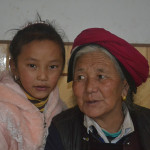
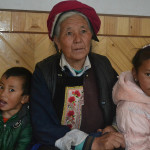
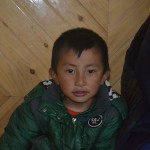

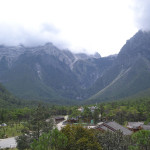
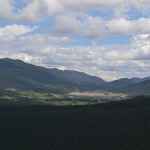
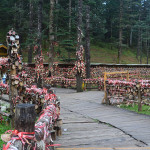
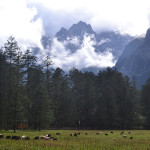
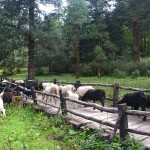
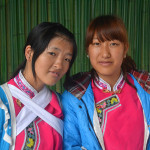
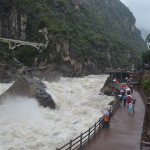
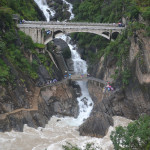
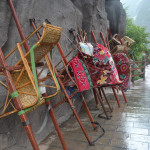
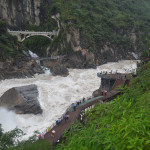
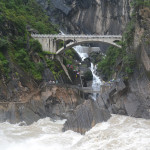
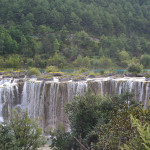
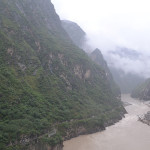
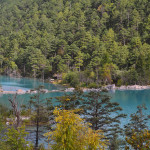
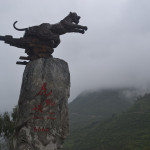
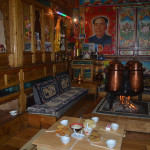
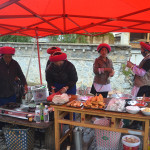
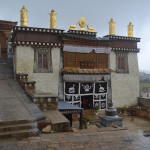
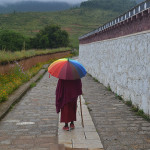
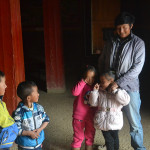
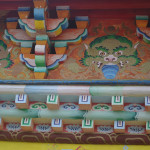
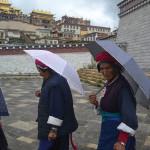
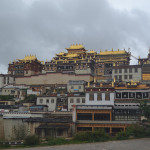
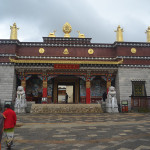
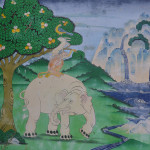
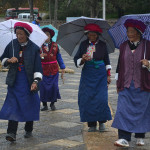
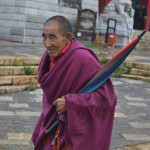
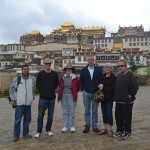
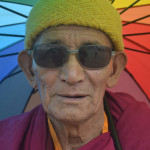
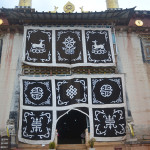
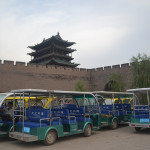
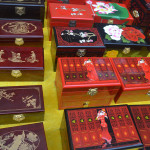
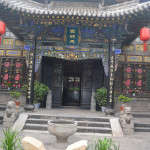

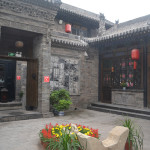
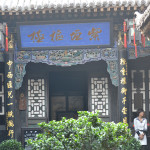
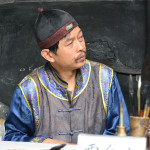
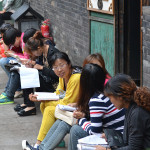
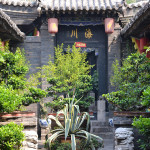
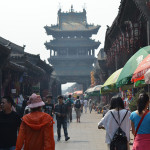
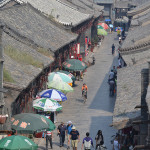
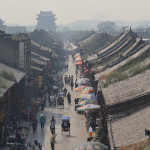
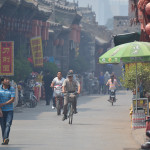
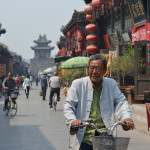
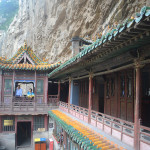
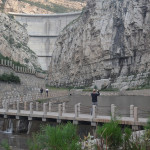
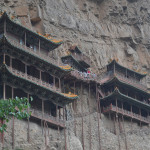
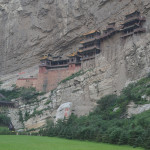
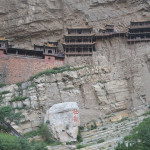
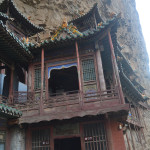
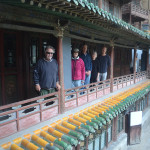
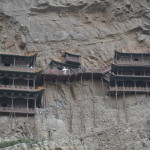
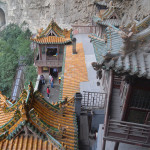
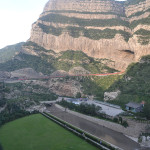
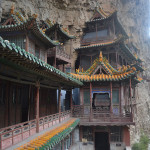
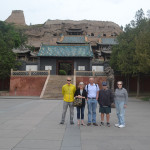
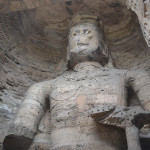
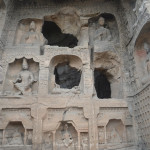
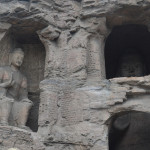
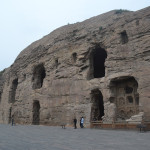
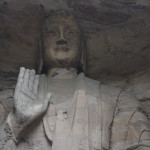
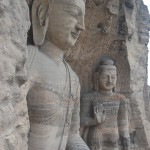
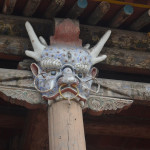
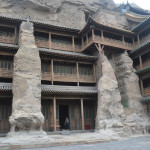
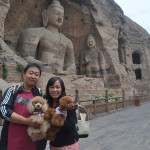
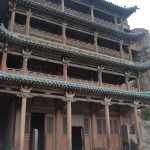
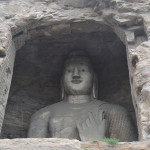
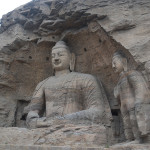
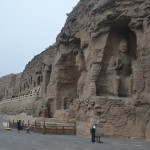
What a great trip. We got to see some of the places you visited on our China trip but we did not get to Shangrila
or several of the other places you got to.
Glad you liked it, Bill! 😀 How did you like China in general?
WOW absolutely loved the pictures!!!!!!!!!!!!!!
Thanks, Chris! Highly recommend you visit China